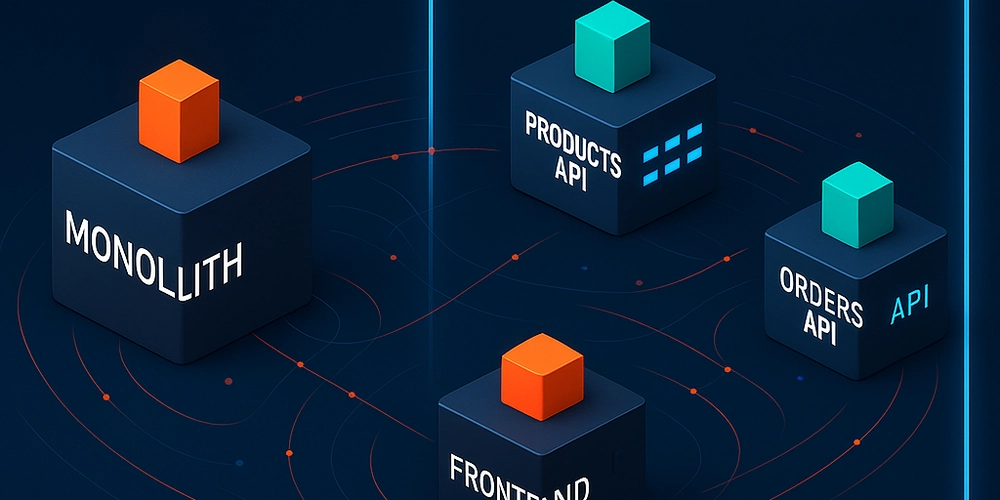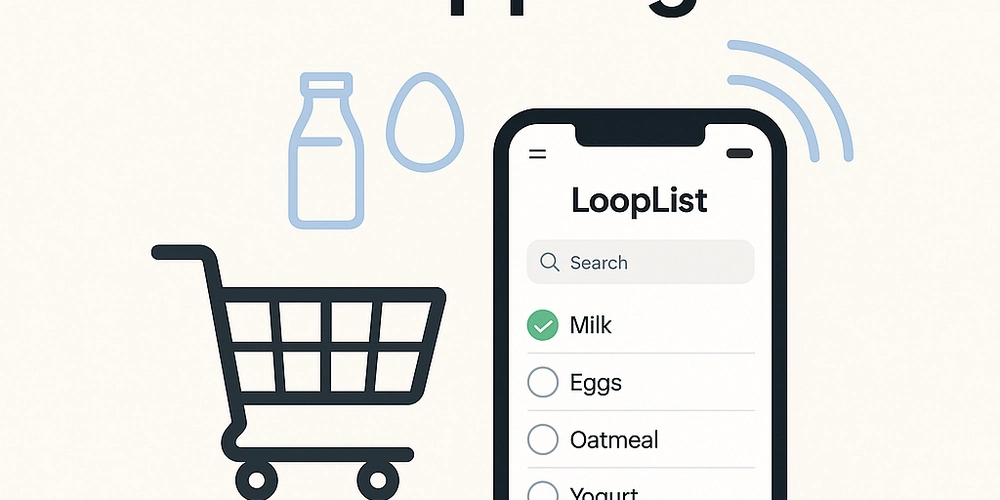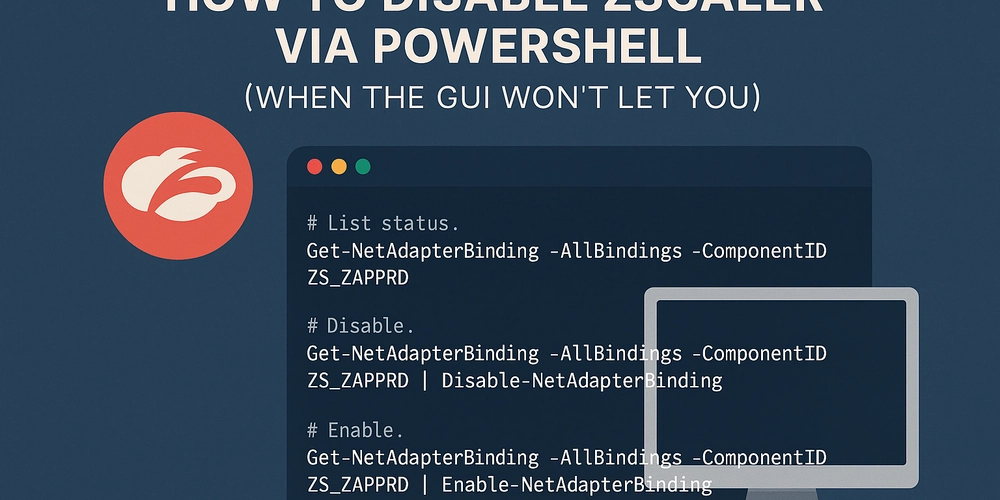Break free from monolithic constraints: See how GKE transforms your architecture for better scalability, resilience, and team autonomy. Like many developers, I started building web applications with a monolithic architecture. It seemed logical at the time—one codebase, one deployment, simple to understand. But as my applications grew in complexity and user base, I began experiencing the limitations firsthand. Today, I want to share my journey transitioning from monolithic applications to microservices using Google Kubernetes Engine (GKE), and why this migration changed everything for my development workflow. The Monolith: Where We All Begin When starting a new web app, most of us default to creating a single codebase that handles everything. This monolithic approach puts all functionalities—frontend, backend, database interactions—into one server and one codebase. Typically, we build on a single framework: Backend: Spring Boot, Django, Express.js, or Rails Frontend: Bundled within the same project or deployed separately but still as a single application This approach works wonderfully at first. Development is fast, deployment is straightforward, and the mental model is simple. But as I discovered, things don't stay simple forever. When Monoliths Become Monsters After maintaining several monolithic applications through growth phases, I encountered recurring issues that became increasingly difficult to ignore: Scaling inefficiencies: When my user authentication service experienced heavy load, I had to scale the entire application—including rarely-used features—wasting significant resources. Deployment headaches: Even minor changes to a single feature required redeploying the entire system, leading to unnecessary downtime and extensive testing cycles. The dreaded single point of failure: One memory leak in an obscure feature could bring down the entire application. Growing complexity: As our team expanded, onboarding new developers became challenging. No single person could understand the entire codebase, slowing down development. Technology stagnation: Wanting to use cutting-edge frameworks or languages for new features meant refactoring enormous portions of code, which was rarely feasible. These problems weren't unique to me—they represent the classic scaling challenges that push development teams toward microservices architecture. Microservices: A New Architectural Paradigm Microservices offered a solution by decomposing my monolith into smaller, independently deployable services, each handling specific business functionality: Frontend Service – Dedicated to user interface concerns Order Service – Focused solely on order processing Product Service – Managing product data and inventory Each service could now: Scale independently based on its specific demand Be developed, tested, and deployed without affecting other services Be built using the ideal technology stack for its particular requirements Be owned by a specific team, enabling greater autonomy Enter Google Kubernetes Engine (GKE) While microservices solved many problems, they introduced new complexity in deployment and orchestration. This is where Google Kubernetes Engine became invaluable in my journey. GKE provided a managed Kubernetes environment that handled the orchestration of my containerized microservices, taking care of: Service discovery and load balancing Automated scaling based on demand Self-healing capabilities Secret and configuration management With GKE, I could focus on building better services rather than managing infrastructure. Why This Migration Was Worth It The benefits I've experienced after migrating to microservices with GKE have transformed how my team works: Targeted scaling: During sales events, we scale only our product and checkout services, keeping costs reasonable. Faster feature delivery: Teams deploy new features independently multiple times per day without coordinating company-wide releases. Improved resilience: Last month, an issue in our recommendation service had zero impact on critical shopping functionality. Team specialization: Frontend specialists work exclusively on the UI service, while data engineers optimize our analytics services. Technology flexibility: We've implemented real-time features with Node.js while maintaining our data processing in Python—choosing the right tool for each job. Is Microservice Migration Right for You? While my experience has been overwhelmingly positive, microservices aren't a silver bullet. Consider this approach if: Your application has clear functional boundaries Different components have different scaling needs You need to accelerate development across multiple teams You're experiencing growing pains with your monolith However, be prepared for the added complexity of distributed systems. Monitoring, tracing, and maintaining data consistency become more challengi

Break free from monolithic constraints: See how GKE transforms your architecture for better scalability, resilience, and team autonomy.
Like many developers, I started building web applications with a monolithic architecture. It seemed logical at the time—one codebase, one deployment, simple to understand. But as my applications grew in complexity and user base, I began experiencing the limitations firsthand.
Today, I want to share my journey transitioning from monolithic applications to microservices using Google Kubernetes Engine (GKE), and why this migration changed everything for my development workflow.
The Monolith: Where We All Begin
When starting a new web app, most of us default to creating a single codebase that handles everything. This monolithic approach puts all functionalities—frontend, backend, database interactions—into one server and one codebase.
Typically, we build on a single framework:
- Backend: Spring Boot, Django, Express.js, or Rails
- Frontend: Bundled within the same project or deployed separately but still as a single application
This approach works wonderfully at first. Development is fast, deployment is straightforward, and the mental model is simple. But as I discovered, things don't stay simple forever.
When Monoliths Become Monsters
After maintaining several monolithic applications through growth phases, I encountered recurring issues that became increasingly difficult to ignore:
Scaling inefficiencies: When my user authentication service experienced heavy load, I had to scale the entire application—including rarely-used features—wasting significant resources.
Deployment headaches: Even minor changes to a single feature required redeploying the entire system, leading to unnecessary downtime and extensive testing cycles.
The dreaded single point of failure: One memory leak in an obscure feature could bring down the entire application.
Growing complexity: As our team expanded, onboarding new developers became challenging. No single person could understand the entire codebase, slowing down development.
Technology stagnation: Wanting to use cutting-edge frameworks or languages for new features meant refactoring enormous portions of code, which was rarely feasible.
These problems weren't unique to me—they represent the classic scaling challenges that push development teams toward microservices architecture.
Microservices: A New Architectural Paradigm
Microservices offered a solution by decomposing my monolith into smaller, independently deployable services, each handling specific business functionality:
- Frontend Service – Dedicated to user interface concerns
- Order Service – Focused solely on order processing
- Product Service – Managing product data and inventory
Each service could now:
- Scale independently based on its specific demand
- Be developed, tested, and deployed without affecting other services
- Be built using the ideal technology stack for its particular requirements
- Be owned by a specific team, enabling greater autonomy
Enter Google Kubernetes Engine (GKE)
While microservices solved many problems, they introduced new complexity in deployment and orchestration. This is where Google Kubernetes Engine became invaluable in my journey.
GKE provided a managed Kubernetes environment that handled the orchestration of my containerized microservices, taking care of:
- Service discovery and load balancing
- Automated scaling based on demand
- Self-healing capabilities
- Secret and configuration management
With GKE, I could focus on building better services rather than managing infrastructure.
Why This Migration Was Worth It
The benefits I've experienced after migrating to microservices with GKE have transformed how my team works:
Targeted scaling: During sales events, we scale only our product and checkout services, keeping costs reasonable.
Faster feature delivery: Teams deploy new features independently multiple times per day without coordinating company-wide releases.
Improved resilience: Last month, an issue in our recommendation service had zero impact on critical shopping functionality.
Team specialization: Frontend specialists work exclusively on the UI service, while data engineers optimize our analytics services.
Technology flexibility: We've implemented real-time features with Node.js while maintaining our data processing in Python—choosing the right tool for each job.
Is Microservice Migration Right for You?
While my experience has been overwhelmingly positive, microservices aren't a silver bullet. Consider this approach if:
- Your application has clear functional boundaries
- Different components have different scaling needs
- You need to accelerate development across multiple teams
- You're experiencing growing pains with your monolith
However, be prepared for the added complexity of distributed systems. Monitoring, tracing, and maintaining data consistency become more challenging.
Want to Learn More?
I've documented my complete migration journey, including step-by-step implementation guidelines, containerization strategies, and GKE deployment workflows in a comprehensive guide on my blog.
For more detailed information, please refer to my blog
Have you made a similar transition? I'd love to hear about your experiences in the comments!




























































































































































![[The AI Show Episode 143]: ChatGPT Revenue Surge, New AGI Timelines, Amazon’s AI Agent, Claude for Education, Model Context Protocol & LLMs Pass the Turing Test](https://www.marketingaiinstitute.com/hubfs/ep%20143%20cover.png)






























































































































![[FREE EBOOKS] AI and Business Rule Engines for Excel Power Users, Machine Learning Hero & Four More Best Selling Titles](https://www.javacodegeeks.com/wp-content/uploads/2012/12/jcg-logo.jpg)











































































































































































































































![Hostinger Horizons lets you effortlessly turn ideas into web apps without coding [10% off]](https://i0.wp.com/9to5mac.com/wp-content/uploads/sites/6/2025/04/IMG_1551.png?resize=1200%2C628&quality=82&strip=all&ssl=1)


![This new Google TV streaming dongle looks just like a Chromecast [Gallery]](https://i0.wp.com/9to5google.com/wp-content/uploads/sites/4/2025/04/thomson-cast-150-google-tv-1.jpg?resize=1200%2C628&quality=82&strip=all&ssl=1)













![Apple Drops New Immersive Adventure Episode for Vision Pro: 'Hill Climb' [Video]](https://www.iclarified.com/images/news/97133/97133/97133-640.jpg)

![Most iPhones Sold in the U.S. Will Be Made in India by 2026 [Report]](https://www.iclarified.com/images/news/97130/97130/97130-640.jpg)

































































































































